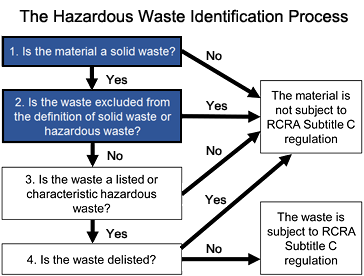The smart Trick of Reclaim Waste That Nobody is Discussing
Table of ContentsReclaim Waste Things To Know Before You BuyExcitement About Reclaim WasteAbout Reclaim Waste9 Easy Facts About Reclaim Waste Described5 Simple Techniques For Reclaim Waste
Explore the kinds, events, and types of liquid waste. Residential sewage waste describes the waste and items from a property sewage-disposal tank. This sort of waste is produced by people in residences, colleges, and various other buildings. This only consists of sewage-disposal tanks that have a drainpipe field. The proper management and disposal of domestic sewage waste require fluid waste to be transferred to a sewage treatment plant where the correct techniques and devices are related to detoxify and dispose of waste.
Commercial waste typically includes potential hazards, such as combustible materials or a combination of fluid and strong waste products, and requires an advanced and detailed disposal procedure. The disposal of business waste typically involves the filtration of waste prior to transport to make certain risk-free and proper disposal. Hazardous waste is produced from byproducts and runoff of industrial processes and manufacturing.
This sort of waste can not utilize the exact same sewer monitoring transport or procedures as septic or business fluids. The hazardous waste administration process needs the evaluation and screening of fluid waste before it undergoes the disposal procedure (liquid waste removal). Overflow waste is the liquid waste that comes from runoff and excess stormwater in very booming areas or cities
Runoff waste can create contamination and flooding if not taken care of appropriately. Making sure proper waste administration can stop catastrophes and reduce environmental damage.
The Facts About Reclaim Waste Revealed
Contact PROS Services today to find out about our waste monitoring and disposal solutions and the proper means to care for the fluid waste you produce.
(https://packersmovers.activeboard.com/forum.spark#comment-71317007)This supposed 'wastewater' is not just an important resource but, after treatment, will be launched to our land, rivers or the ocean. Used water from commodes, showers, baths, cooking area sinks, washings and industrial processes is understood as wastewater.

water made use of to cool machinery or clean plant and devices). Stormwater, a kind of wastewater, is runoff that flows from farming and metropolitan locations such as roofings, parks, gardens, roadways, paths and rain gutters right into stormwater drains, after rain. Stormwater streams unattended straight to local creeks or rivers, at some point getting to the ocean.
The Greatest Guide To Reclaim Waste
In Queensland, most wastewater is dealt with at sewer therapy plants. Wastewater is delivered from domestic or industrial websites through a system of sewage systems and pump stations, referred to as sewage reticulation, to a sewage treatment plant. Neighborhood federal governments develop, maintain and operate most sewage therapy plants. Operators are certified under the Environmental Defense Act 1994 to release cured wastewater at an acceptable environmental criterion right into waterways.
The Department of Natural Resources recommends neighborhood governments about handling, operating and keeping sewage systems and therapy plants. In unsewered areas, city governments might need homeowners to install specific or family sewage therapy systems to treat domestic wastewater from toilets, kitchen areas, washrooms and laundries. The Department of Natural Resources authorizes the use of home systems when they are confirmed to be reliable.
In some brand-new neighborhoods, therapy of some stormwater to remove trash, sand and gravel has actually begun utilizing gross contaminant catches. Wastewater Click This Link treatment happens in four phases: Eliminates solid issue.
Wastewater after that moves into large tanks where solids work out and are gotten rid of as sludge. Oil and residue are skimmed from the surface. Makes use of tiny living microorganisms called micro-organisms to break down and remove continuing to be liquified wastes and fine particles. Micro-organisms and wastes are integrated in the sludge. Gets rid of nitrogen and phosphorus nutrients that could trigger algal blossoms in our waterways and threaten aquatic life.
What Does Reclaim Waste Mean?
Nutrient removal is not readily available whatsoever sewer therapy plants due to the fact that it calls for costly specialist tools. It is becoming more typical in Queensland. Clear liquid effluent generated after therapy may still consist of disease-causing micro-organisms. If this effluent is released into waterways such as rivers or the sea, the micro-organisms will ultimately pass away out.

This normally means wastewater has actually to be treated or contaminants eliminated prior to it can be discharged to waterways. Many wastewater flows right into the sewage system. Under the Act, neighborhood governments provide authorizations and licences for eco appropriate activities (ERAs) including wastewater releases that might have a neighborhood impact. The department provides approvals and licences to Ages entailing wastewater launches that might have a local or statewide effect.
The 10-Minute Rule for Reclaim Waste
Monitoring gives accurate information concerning water top quality and can confirm that licence conditions are being fulfilled. The details gotten via surveillance provides the basis for making water high quality decisions.